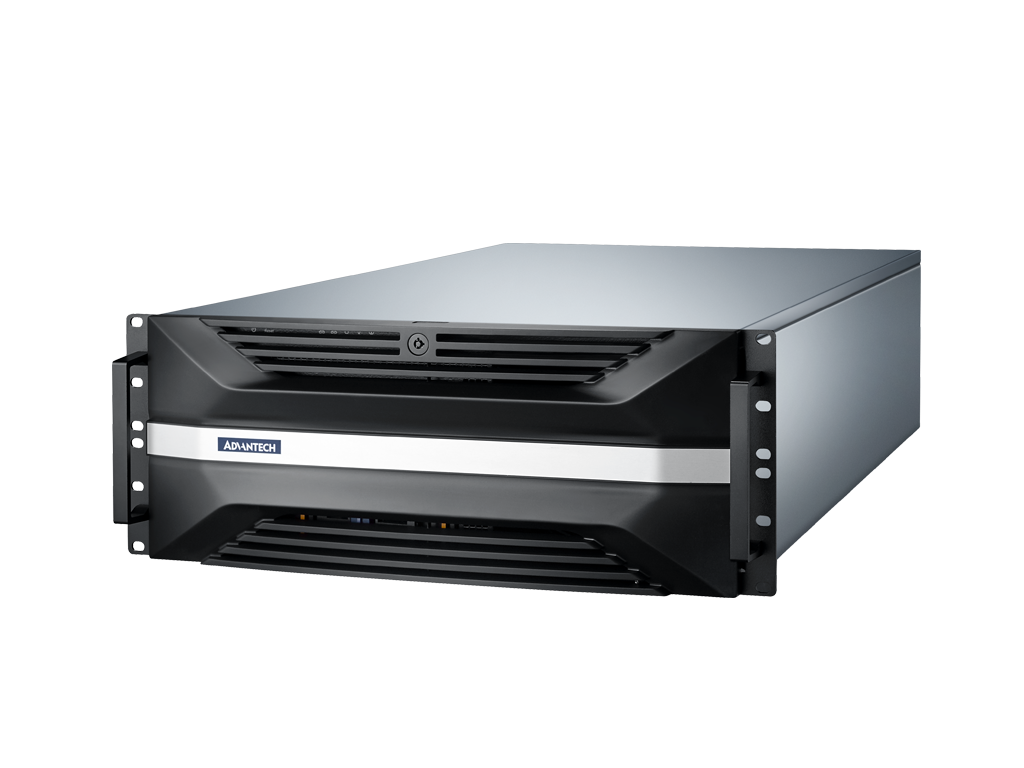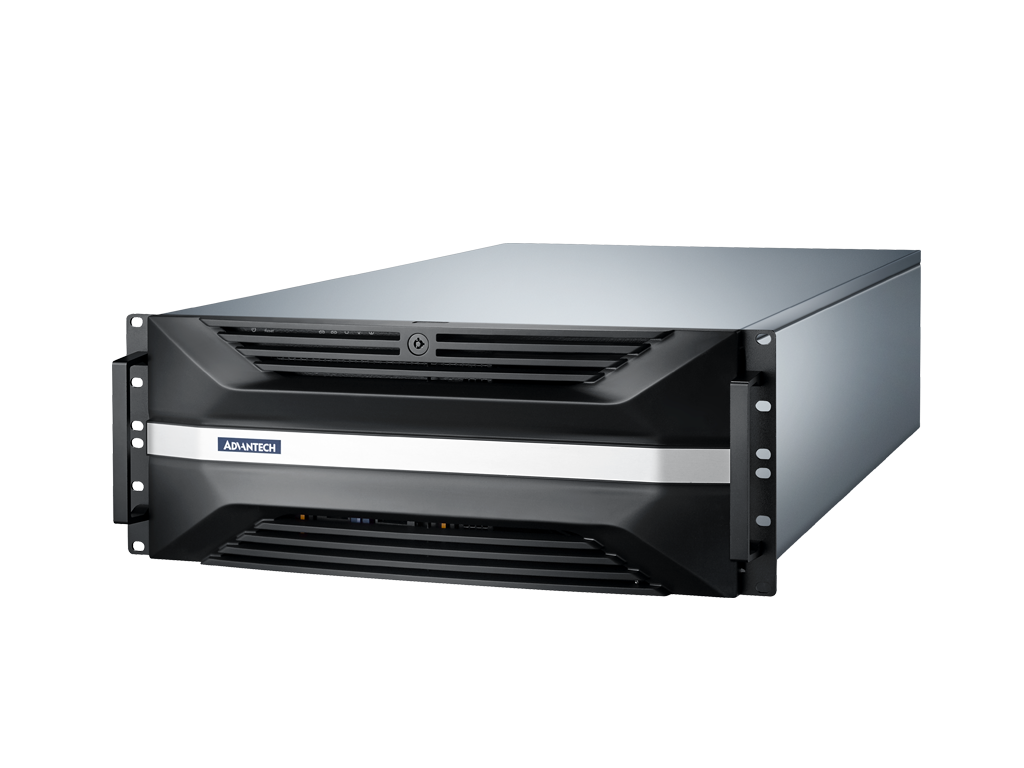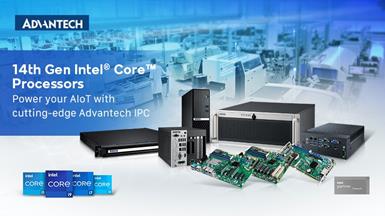Industrial Servers Ramp up AI for Robotic Arms
5/22/2021

Location: The United States of America
Background
Smart manufacturing is bringing sweeping changes to automated production and delivery of goods, and it’s leading to breakthroughs with artificial intelligence (AI) for many use cases. As applications of AI in smart manufacturing grow, so does demand for AI-enabled industrial servers with GPUs handling inference and training workloads.
One emerging use case for AI in smart manufacturing is its use with robotic arms. These arms with actuators and sensors move in precise sequences, lifting and positioning items safely – helping automate production and increase throughput. However, as manufacturing scales, programming and optimizing a large fleet of robotic arms can become a bottleneck.
Ramping up AI technology holds the key to deploying robotic arms at-scale. It needs AI-ready industrial servers that differ from a typical server found in a data center.
System Requirements
Integrating AI with robotic arms is a new approach with significant benefits. Three phases –programming, operating, and maintaining – define success in robotic arm deployments. Often, an array of several robotic arms pairs with one industrial server on part of a line. Adding AI processing in that server can have a big impact on each of the three phases.
Programming. AI helps a programmed robotic arm compensate for different sizes and positioning of items. For example, a robotic arm may handle a variety of cardboard box sizes on a pack-to-ship line without programming changes. AI also enables learning-by-demonstration (LbD). This emerging capability lets a human operator train an arm by physically guiding it through motion sequences.
Operating. Motion efficiency is a key metric of operational efficiency. Once programmed, AI optimizes movements cutting out milliseconds of time. Those milliseconds add up to big savings across stations over weeks of operation, while efficiency gains come from reduced errors as AI sees more situations and evolves.
Maintaining. Uptime is also a critical metric for automation deployment. Sensors in each robotic arm provide extensive data on operation. While arm motion may still be within bounds, over time as parts wear precision degrades. Predictive analytics can process sensor readings looking for slight degradation trends. Anticipating maintenance needs helps coordinate replacement parts and scheduling.
Robotic arms team with micro controllers, packing significant intelligence. An arm can recognize each item it touches and decide how much pressure to apply without damage. If factory need to have robotic arms, the amount and type of processing is required. Many AI developers choose NVIDIA® GPUs, which combine processing power and ease of programming. Often, delivering real-time AI inference results in microseconds requires several GPU cards working together, and a single high performance GPU card can consume up to 300W of power. AI training functions may also reside on an industrial server with enough GPU processing.
A localized industrial server also offers benefits in safety-critical implementations and cyber security protection. It’s a single platform for development, qualification, and maintenance. Servers also offer expansion for industrial communication protocols. An industrial server can gate operational technology (OT) networks to IP-based information technology (IT) networks.
Criteria for industrial servers span performance, quality, reliability, and longevity including revision control. Life cycles for industrial applications are often seven years or more. Pilot servers must be the same configuration as production servers purchased years later. Uncontrolled revisions send life cycle costs spiraling higher.
The same requirements flow down to memory and storage components. Industrial servers usually support error checking and correction (ECC) memory. ECC corrects single bit errors on the fly, helping both uptime and data integrity. Registered DIMMs (RDIMMs) allow parallel access through memory channels and ranks for increased bandwidth. Flash-based solid-state drives (SSDs) offer reliable storage with faster access and lower latency. Still, selected ECC RDIMMs and SSDs must live much longer than commercial counterparts.

System Description

An example of an AI-ready industrial server is the Advantech SKY-6400 – a 4U Intel® Xeon® Scalable server with four PCIe x16 double-deck slots and 2000W of 1+1 redundant power supply. “For Applications, we’ve designed the SKY-6400 to power and cool payloads up to four NVIDIA V100 Tensor Core GPU,” says James Yung, Server Product Management Manager for Advantech.
Everything in the SKY-6400 server is chosen with an eye toward performance, quality,reliability, and longevity needed for industrial deployments. For example, the SKY-6400 uses Intel Xeon Scalable processors from the Intel embedded road map with at least seven-year guaranteed availability.
This philosophy led Advantech to align with Micron Technology as an Industrial Quotient (IQ) Partner. Micron IQ qualifies select ECC RDIMMs and SSDs for long-life markets. IQ goals include design-for-reliability, extensive QA testing, extended longevity, application-specific optimization, and ruggedization. “Micron IQ helps lower total cost of ownership (TCO) for industrial servers with AI-ready performance,” says Taufique Ahmed, Sr. Industrial Segment Marketing Manager for Micron.
The Advantech SKY-6400 pairs its Intel Xeon Scalable processor with 64GB Micron DDR4 ECC RDIMMs clocked at 2666 MHz. For storage, the Advantech SKY-6400 supports SATA SSDs such as the Micron 1300 in either 2.5” or M.2 form factors. These SSDs use reliable 96-layer TLC NAND technology achieving 530 MB/s read performance with reduced power consumption. The Micron IQ advantage helps speed up AI training and inference, all running on one AI-ready industrial server.
What’s Ahead for AI in Smart Manufacturing
AI is crossing from the IT realm into distributed edge computing environments. AI-enabled industrial servers are pairing with advanced robotics and IoT sensors in many applications throughout smart manufacturing facilities. Real-time decisions at the edge reduce loads on networks, storage, and analytics. Dashboards monitor edge processing and highlight exceptions needing attention.More AI experience will reveal new innovations, driving more AI-enabled server growth. Ramping up AI in smart manufacturing means selecting equipment up to the challenge. The partnership between Advantech and Micron is ready for AI at the edge with industrial-class servers, DDR4 ECC RDIMMs,and SSDs offering performance, quality, reliability, and longevity.
Industrial Quotient (IQ) Partner - Micron

Micron is industry leader in innovative memory and storage solutions. Through our global brands — Micron® and Crucial® — our broad portfolio of high-performance memory and storage technologies,including DRAM, NAND, 3D XPoint™ memory and NOR, is transforming how the world uses information to enrich life. Backed by more than 40 years of technology leadership, our memory and storage solutions enable disruptive trends, including artificial intelligence, 5G,machine learning and autonomous vehicles, in key market segments like mobile, data center,client, consumer, industrial, graphics, automotive, and networking. Our common stock is traded on the Nasdaq under the MU symbol.
Related Product

SKY- 6400
4U Rackmount Intel® Xeon® Scalable Series GPU server. Supporting 4 x PCIe x16 double-deck card and 1 x PCIe x8 single-deck FH/FL card



-25/SKY-640V220240411142411.png)
